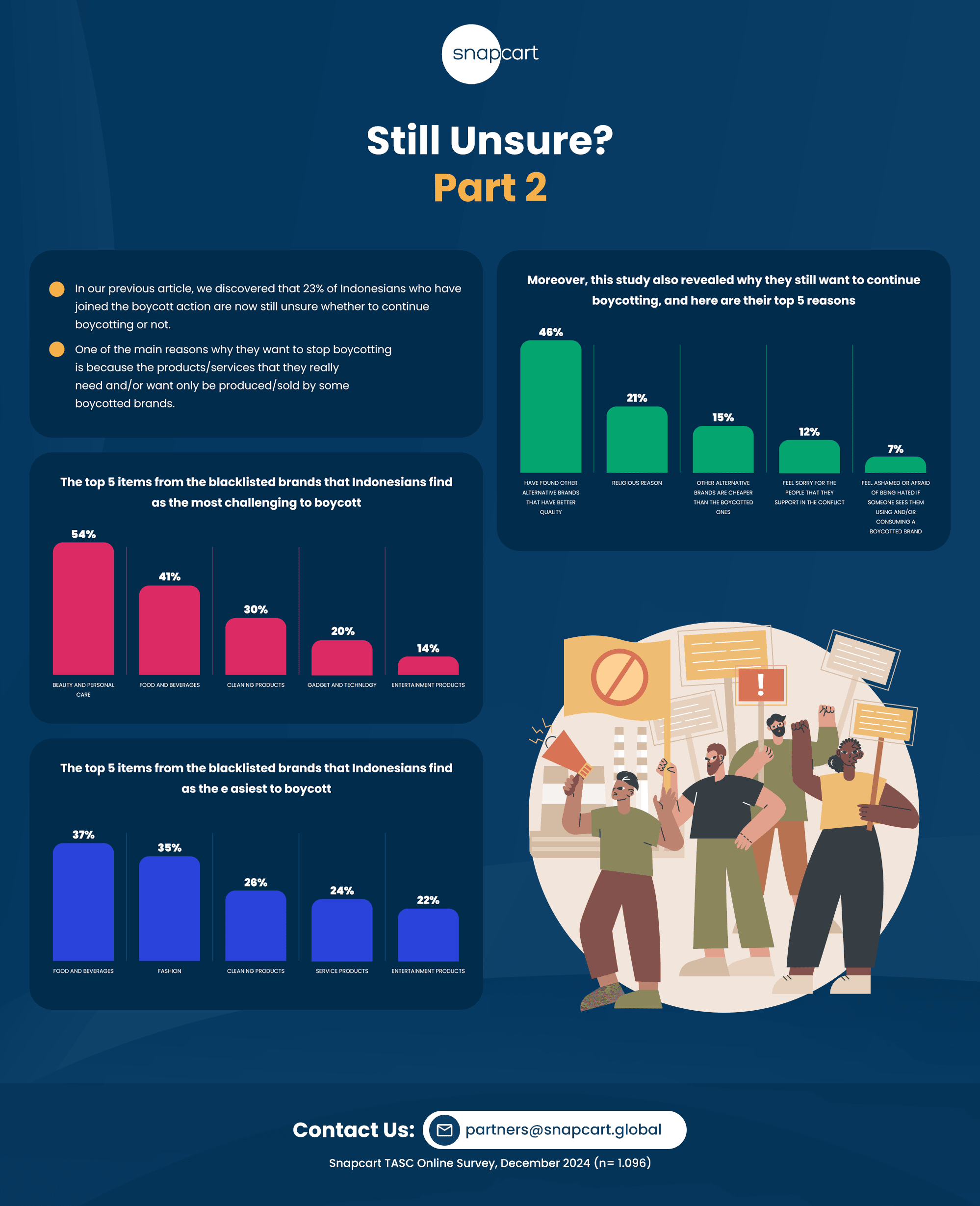In recent times, consumer boycotts have emerged as a powerful expression of values and collective action. However, not all participants remain steadfast in their resolve.
According to our data in the first part of this article, 23% of those who have joined boycott actions are still uncertain about continuing their participation [1]. And the infographic below shows further about their shopping behaviour and reasons behind their hesitation.

The infographic above represents that one significant reason for the uncertainty is the irreplaceability of certain products or services. Many consumers feel compelled to stop boycotting because the items they need or desire are exclusively available from the boycotted brands. This dilemma underscores the strong market position some brands hold, making it challenging for consumers to fully adhere to their boycott commitments.
Despite the challenges, some consumers remain committed to boycotting. This research revealed the top five reasons why Indonesians choose to persist:
- Availability of Better Alternatives (46%) Many consumers have discovered alternative brands that offer superior quality compared to the boycotted ones.
- Religious Reasons (21%) Religious beliefs play a significant role in motivating continued participation in boycotts.
- Comparable Quality in Other Brands (15%) Consumers find other available brands to be on par with the boycotted ones, reinforcing their decision to switch.
- Solidarity with the Cause (12%) A sense of responsibility and solidarity with the larger movement keeps some consumers committed.
- Avoiding Association with Boycotted Brands (7%) Some individuals feel ashamed or fearful of public perception if they are seen supporting boycotted brands.
The Most Challenging and the Easiest Products to Boycott
Moreover, this survey also identified the top five categories of blacklisted products that Indonesians find hardest to boycott:
- Beauty and Personal Care (54%)
- Food and Beverages (41%)
- Cleaning Products (30%)
- Gadgets and Technology (20%)
- Entertainment Products (14%)
These categories are integral to daily life, making it particularly difficult for consumers to find suitable alternatives.
On the other hand, certain product categories are perceived as easier to avoid. The top five include:
- Food and Beverages (37%)
- Fashion (35%)
- Cleaning Products (26%)
- Service Products (24%)
- Entertainment Products (22%)
These findings suggest that the availability of substitutes and the perceived necessity of the product play significant roles in influencing boycott behavior.
All in all, while some individuals face challenges in maintaining their resolve due to the indispensability of certain products, others remain steadfast, driven by values, beliefs, and the availability of quality alternatives. As consumer awareness and activism continue to grow, brands and policymakers must take note of these insights to better understand and respond to evolving market sentiments.
For more information, contact us at partners@snapcart.global.
Source:





